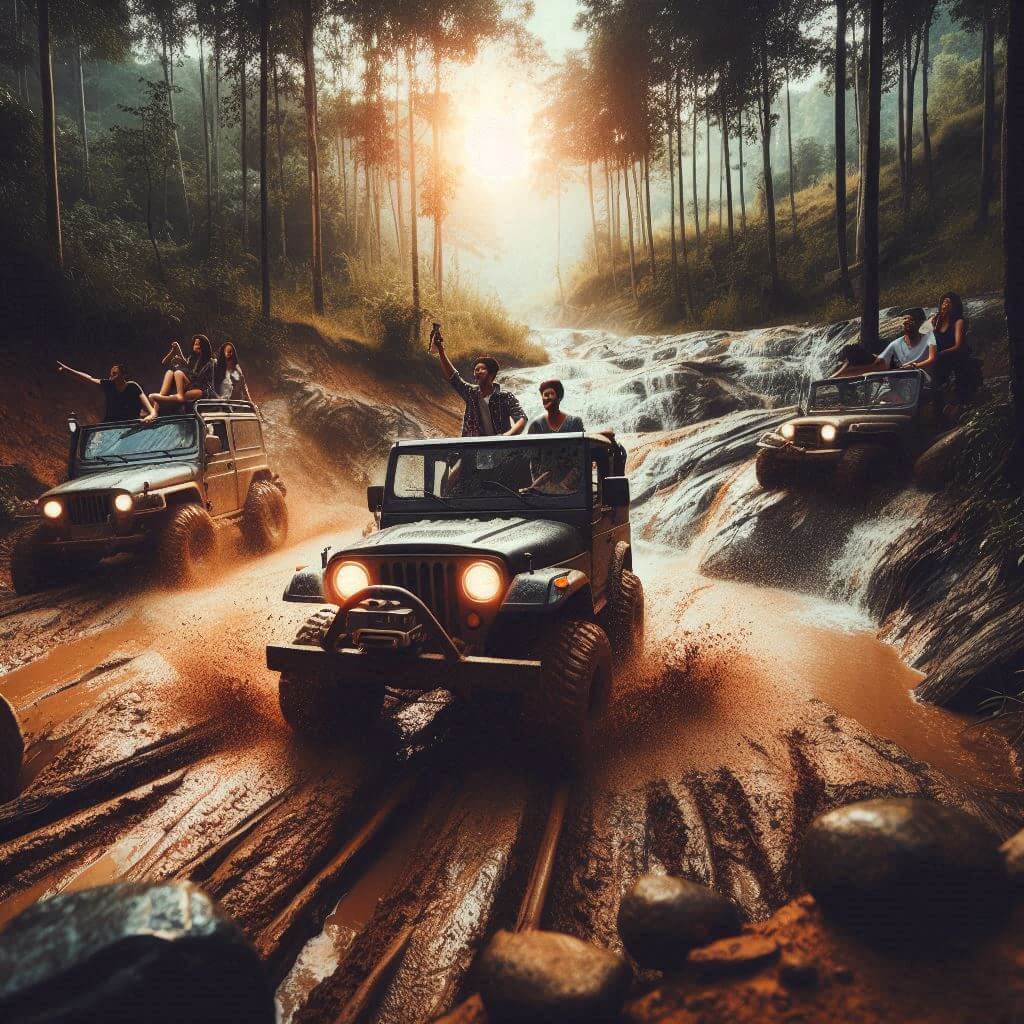The Fundamentals of Off-Roading: What You Need to Know

Off-roading has become a popular adventure for outdoor enthusiasts, bringing a unique blend of excitement, exploration, and connection with nature. Whether you’re traversing rocky trails, dusty deserts, or lush forests, understanding the basics of off-roading can make your adventure safer and more enjoyable. This article delves into the fundamentals of off-roading, including the types of vehicles, essential gear, techniques, and critical safety tips.
Contents
Understanding Off-Roading
Off-roading refers to driving on unpaved surfaces, which can include rocks, mud, gravel, sand, and any other rough terrain you might encounter outside urban environments. Off-roading is more than just a recreational activity; it’s a way to explore nature and access remote locations that are often unreachable by conventional vehicles.
Types of Off-Road Vehicles
Before you embark on your off-roading journey, it’s essential to choose the right vehicle for your adventures. There are several types of off-road vehicles, each designed to handle various terrains and challenges:
- 4×4 Trucks and SUVs: These vehicles feature four-wheel drive (4WD), allowing power to be distributed to all four wheels. Models like the Jeep Wrangler, Ford Bronco, and Toyota 4Runner are popular choices among off-roading enthusiasts for their rugged design and capability.
- All-Terrain Vehicles (ATVs): Small and agile, ATVs are perfect for tackling tight trails and rugged landscapes. They come in various sizes and configurations and are suitable for one or two riders.
- Dune Buggies: Designed specifically for loose, sandy terrain, dune buggies feature lightweight frames and powerful engines, allowing them to glide over the surface of the sand with ease.
- Dirt Bikes: For the thrill-seeker, dirt bikes offer a fast-paced off-roading experience. These lightweight motorcycles are designed for rough trails and can maneuver efficiently through tight spaces.
- Specialty Vehicles: Some enthusiasts might choose specialized vehicles like rock crawlers or mudding trucks, which are modified to tackle specific challenges or terrains.
Essential Off-Roading Gear
Having the right gear can make a significant difference in your off-roading experience. Below is a list of essential equipment that every off-roader should consider:
- Safety Gear: Always prioritize your safety. Apart from seat belts, consider wearing helmets (especially on ATVs and dirt bikes), gloves, and protective clothing to shield against injuries.
- Recovery Gear: In the event of a breakdown or if you get stuck, recovery gear is crucial. This may include a winch, tow straps, recovery boards, and a shovel.
- Navigation Tools: GPS devices and paper maps are vital, particularly if you’re venturing into unfamiliar territory where signal might be weak. Make sure your gadgets are charged and, if possible, have backups.
- First Aid Kit: An off-road adventure comes with risks, so keep a well-stocked first aid kit handy for any minor injuries that may arise while exploring.
- Spare Tire and Tools: Flat tires are a common occurrence in off-roading. Bring a spare tire and the necessary tools to change a flat if needed.
- Camping Gear: If you’re planning to extend your adventure with camping, make sure to pack adequate camping gear, including tents, sleeping bags, and cooking equipment.
Off-Roading Techniques
Mastering specific driving techniques is essential for navigating various terrains safely and efficiently. Here are some fundamental off-roading techniques to keep in mind:
- Momentum is Key: When climbing hills or overcoming obstacles, sometimes maintaining a steady momentum enables you to glide over challenges more easily than stopping and starting.
- Pick Your Line: Understand the path you want to take. Scan the terrain ahead and choose the best line by avoiding obstacles that could damage your vehicle. This approach helps in conserving energy and preventing damage.
- Use Low Range: If your vehicle offers a low-range 4WD option, use it in challenging terrains. Low-range gearing provides better torque and control, crucial for climbing steep hills or handling tricky turns.
- Brake Responsively: Remember that brakes behave differently on loose surfaces. If you’re driving downhill, let your engine assist you by downshifting instead of relying only on brakes to control descent.
- Tire Pressure Matters: Depending on the terrain, adjusting your tire pressure can significantly enhance traction. Lower pressure can improve grip on soft surfaces like sand or mud, while higher pressure is useful for rocky terrain.
Safety Tips for Off-Roading
Safety should always be your top priority while off-roading. Follow these essential tips to ensure a safe adventure:
- Know Your Limits: Be honest about your experience and your vehicle’s capabilities. Avoid tackling trails that exceed your skill level or challenge your vehicle beyond its limits.
- Travel in Groups: It’s always safer to explore in groups. If something goes wrong, having others around can make all the difference, whether you need help getting out of a tough spot or assistance dealing with mechanical issues.
- Respect the Environment: Follow “Leave No Trace” principles. Stay on marked trails, avoid tearing up vegetation, and pack out all trash. Observing these practices is vital for preserving nature for future adventurers.
- Check Weather Conditions: Before you set out, check the weather forecast. Adverse weather conditions like heavy rain or snow can create hazardous driving experiences and lead to being stranded.
- Stay Hydrated and Fuel Up: Off-roading can be physically demanding, so it’s essential to stay hydrated. Also, ensure you fuel up your vehicle fully before embarking on longer off-road adventures.
Off-roading is an exhilarating way to connect with nature while pushing your vehicle to its limits. With the right knowledge, preparation, and respect for the terrain and environment, you can have a safe and enjoyable off-roading experience. Embrace the adventure, learn as you go, and let the trails offer you an unforgettable journey through the great outdoors. Whether you’re driving through muddy paths or scaling rocky hills, the world of off-roading awaits you!
From understanding your vehicle’s capabilities to honing critical driving techniques and prioritizing safety, mastering the fundamentals of off-roading will ensure that every off-road trip is an adventure to remember. Happy trails!


